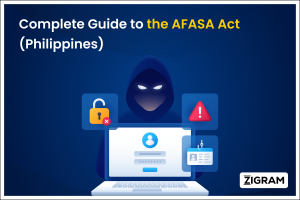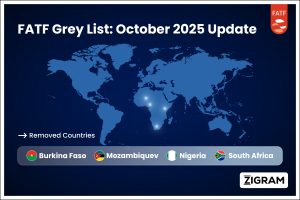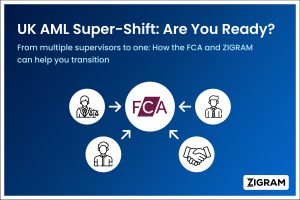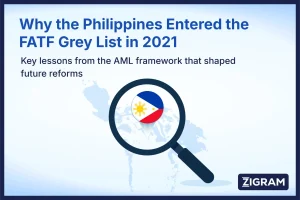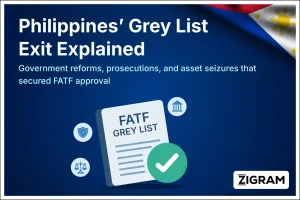Table of Contents
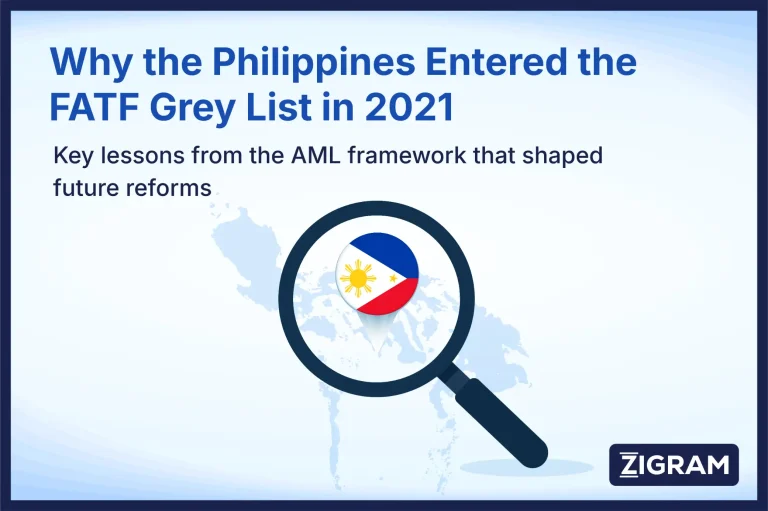
Between the late 2000s and the late 2010s the Philippines built an anti-money-laundering (AML) framework on paper: a primary law, a financial intelligence unit, supervisory rules, and a patchwork of amendments meant to widen coverage. Yet when international assessors reviewed the country in 2018-19, they found gaps between law and practice, gaps that ultimately contributed to the Philippines being placed under “increased monitoring” (the FATF “grey list”) in 2021. This article reconstructs the Philippine scenario before grey-listing: what the law said, how institutions were organised, what the data showed, and where the most important operational weaknesses lay.
Major Amendments That Strengthened the Anti-Money Laundering Law
The Philippines’ principal AML instrument is the Anti-Money Laundering Act of 2001 (Republic Act No. 9160), which established the offense of money-laundering, reporting obligations for “covered persons,” and the Anti-Money Laundering Council (AMLC) as the country’s financial intelligence unit and lead agency on AML/CFT. The original 2001 law was intended to align the Philippines with international standards emerging after 9/11 and the Global AML agenda. [1]
Over the next decade the law was expanded and strengthened by a series of amendments to broaden powers and widen the net of covered institutions. Notable legislative changes include:
- Republic Act No. 9194 (2003) — clarified implementing rules and broadened the set of covered institutions and reporting obligations.
- Republic Act No. 10167 (2012) — further strengthened AMLA, including procedural tools such as ex-parte freeze orders to allow the AMLC to freeze assets without prior notice in certain circumstances.
- Republic Act No. 10365 (2013) — expanded the list of predicate offenses and refined definitions, and broadened obligations for more types of dealers and service providers. [2]
By law the AMLC (chaired by the Bangko Sentral ng Pilipinas governor, with members from the Department of Finance and the Securities & Exchange Commission) had authority to receive suspicious transaction reports (STRs), request assistance from other agencies, issue freeze orders, and refer matters to prosecutors. Supervisory and compliance responsibilities for covered persons were split among the BSP (banks), the SEC (capital market participants), the Insurance Commission, and other sector supervisors.
Institutional and Supervisory Architecture for Financial Oversight
On paper the Philippines had the typical institutional architecture expected under the FATF Forty Recommendations:
- AMLC as the FIU and lead AML/CFT policy body;
- Bangko Sentral ng Pilipinas (BSP) supervising banks and some non-bank financial institutions;
- Securities & Exchange Commission (SEC), Insurance Commission, Bureau of Customs, and other sectoral supervisors for non-bank sectors; and
- Law enforcement and prosecutorial authorities (Philippine National Police, National Prosecution Service, Department of Justice) to investigate and prosecute money-laundering and predicate crimes. [3]
However, the distribution of supervisory responsibilities and the uneven capacity across supervisors created practical vulnerabilities, especially among Designated Non-Financial Businesses and Professions (DNFBPs) such as casinos, real-estate professionals, and certain service providers that were historically less well regulated.
What Enforcement Data Showed Before the FATF Grey List
The picture from STRs, prosecutions, and convictions before the grey-listing period was mixed:
- Rising STR reporting but weak conversion to investigations and prosecutions. The AMLC’s analyses for the 2018–2020 period showed an increase in STR submissions and several sectoral studies (including on internet-based casinos and cross-border FX declarations). Despite more reporting, reported cases and successful prosecutions remained relatively low compared with the scale of suspicious activity identified by analysts and by the AMLC’s own risk assessments.
- Low numbers of prosecutions/convictions in international assessments. The Asia/Pacific Group (APG) mutual evaluation and related materials noted a relatively small number of money-laundering prosecutions and convictions in the broader multi-year snapshots used for assessment. This dissonance — many STRs but few successful prosecutions — was a central practical concern highlighted by assessors. [4]
- Sectoral hotspots: casinos and online gaming. The Philippine gaming and online gaming sectors (including internet-based casinos operating in the Philippines) were repeatedly identified as high-risk for ML/TF, with significant volumes and typologies flagged in AMLC sector analyses. The capacity of supervisors to monitor these rapidly evolving sectors remained a concern in the pre-greylist years.
- Asset tracing and confiscation gaps. Assessors found room for improvement in tools and procedures to seize, freeze and confiscate illicit proceeds and in ensuring timely mutual legal assistance. The legal framework provided powers, but implementation and inter-agency coordination in complex asset-forfeiture cases were uneven. [4]
Core Gaps in AML Compliance and the Risks They Created
Core Weaknesses in Compliance, Oversight, and Prosecution Outcomes
When the Philippines was assessed in its 2018–2019 mutual evaluation (adopted as the MER in October 2019) and in follow-up reports, the main strategic and technical deficiencies identified before grey-listing clustered around the following themes:
- Implementation gap — laws and powers existed, but practical implementation, coordination, and results (prosecutions, confiscations) lagged. The MER and follow-ups emphasised that technical compliance on paper did not always translate into operational effectiveness. [4]
- Supervision of DNFBPs and new business models — coverage and oversight of non-bank sectors (notably parts of the casino and gaming sector, emerging payment providers, and some DNFBPs) were insufficient relative to identified risks. The rapid growth of online gaming created typologies that required nimble supervisory responses.
- Beneficial ownership transparency and corporate vehicles — assessors flagged weaknesses in access to, and reliability of, beneficial ownership information for legal persons and arrangements. This limited investigators’ ability to trace ownership and funds effectively. [4]
- Cross-border information exchange and ML/TF typologies — international cooperation and timely use of mutual legal assistance were areas where assessors urged improvements, particularly given the Philippines’ exposure to cross-border money flows and transnational predicate offenses.
- Limited ML/TF prosecutions and results — despite increases in STRs, successful, well documented money-laundering prosecutions and asset forfeiture results were comparatively few, reducing demonstrable deterrence effects. [4]
These practical gaps, together with the significant risks posed by certain sectors, made the Philippines vulnerable in the eyes of FATF and regional assessors.
How AML Weaknesses Created Costs for Finance, Reputation, and Policy
Being perceived as weak on AML/CFT carries three types of harm:
- Financial risk and corridor friction. Banks and correspondent institutions can impose stricter due diligence or even de-risk relationships, increasing the cost and difficulty of cross-border business for Philippine banks and firms.
- Reputational risk. International investors and partners may treat the jurisdiction as higher-risk, impacting capital flows and the ease of doing international business.
- Policy pressure. Placement on the FATF grey list triggers an intensive program of corrective action — legal reforms, regulatory upgrades, and demonstrable results in enforcement — which can stretch domestic resources and shift enforcement priorities. The grey list itself is the mechanism that forces concentrated reform efforts. [4]
Philippines’ Policy Response Before the 2021 FATF Grey Listing
In the years before the formal 2021 grey-listing, the Philippine government and regulators were not entirely inactive. The passing of successive amendments to AMLA, sectoral supervisory guidance from the BSP, and targeted AMLC sector studies (e.g., on internet-based casinos and foreign currency declarations) show awareness of risk and an effort to shore up weaknesses. Executive orders and action plans were later used to operationalise FATF/APG recommendations. Nevertheless, assessors saw these steps as incomplete — either because they did not fully address core technical deficiencies (for example around beneficial ownership and prosecution outcomes) or because implementation and results were yet to be demonstrated.
Snapshot conclusion: a system with tools — but not yet the outcomes
Before the Philippines was placed on the FATF grey list in 2021 the country had a credible legal skeleton for AML/CFT: a principal law that had been successively strengthened, an FIU with explicit powers, and sectoral supervisors with mandates to enforce reporting. Yet international evaluators found a persistent implementation problem: rising STRs and legal powers were not matched by consistently effective investigations, prosecutions, asset confiscations, or robust supervision in certain high-risk sectors. The identified vulnerabilities — DNFBP oversight, beneficial ownership opacity, and limited convictions — were the cracks that invited intensified international scrutiny.
Placing the Philippines under increased monitoring in 2021 did two things: it publicly signalled those weaknesses and it required a concentrated program of remedial measures, binding a political and institutional priority to show concrete results. That grey-list pressure would drive legislative, regulatory and operational reforms in the following years when the Philippines moved from a system of largely adequate laws on paper to one that had to demonstrate measurable effectiveness in practice. Read our next article on “Heading” (with hyperlink) that dives in to what changes from laws, enforcement and government reforms that paved the way for them to exist the FATF grey list in 2025. [4]
Bibliography
- #GENIUSAct
- #Stablecoins
- #AML
- #FinancialCrime
- #Compliance
- #CryptoRegulation
- #FinCEN
- #SanctionsCompliance
- #RegTech
- #AntiMoneyLaundering
- #DigitalAssets
- #FinancialSecurity

